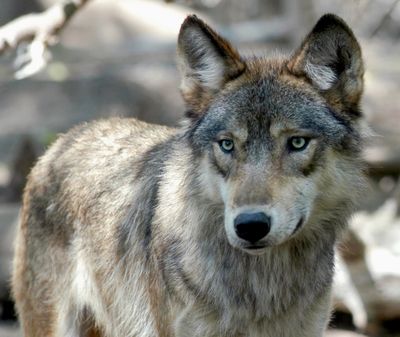Idaho wolf population remains stable, despite more hunting, trapping

Idaho’s wolf population remained stable between 2019 and 2020 despite 53% more human-caused mortality, according to an Idaho Fish and Game population estimate.
According to the 2020 estimate, there were 1,556 wolves, 10 fewer than the 2019 estimate of 1,566. The estimates were made in August, when the wolf population is usually at its peak.
Human-caused mortality of wolves between the two August estimates was documented at 583, 53% higher than the 382 during the previous year. Combined with natural mortality, IDFG estimates the minimum population to be 900.
To come to the estimate, IDFG deployed 566 cameras in July and August . Those cameras collected nearly 7 million photos. Specially designed software then combed through those photos and a mathematical model was used to come to a population estimate.
Some have questioned the methodology of the survey, however, noting that it’s a new procedure.
“Characterizing the population as stable based on population estimates using the new camera trap methodology is a bit of a leap,” said Talasi Brooks, a staff attorney with Western Watersheds. “What is sad about this is that the population estimate, whether reliable or not, will undoubtedly be used to justify further liberalizing wolf management policies to promote more wolf-killing.”
IDFG stopped surveying wolves in 2015, starting again in 2019 using the new camera trap methodology. The state has committed to maintaining a population of at least 150 wolves.
“The IDFG Commission is responsible for managing the state’s wolf population, and it has established an objective to manage for a smaller wolf population to reduce conflicts with livestock and managing the state’s wildlife to keep a healthy balance between predators and prey,” IDFG director Ed Schriever said in a news release. “The population estimate is a valuable tool to both measure the effectiveness of the commission’s management and provide the public with a clear understanding of that management. Although the population was stable from 2019 to 2020, the estimate did measure lower wolf occupancy in areas where wolf mortality was highest.”
Wolves are known for their fecundity and their resilience, according to wolf biologists, so a stable population despite more intense hunting isn’t unthinkable.
“I think the method shows promise but likely needs more testing to determine its strengths and weaknesses,” said David Ausband, a professor at the University of Idaho and wolf researcher.
Chris Bachman, the wildlife program manager for the Spokane-based Lands Council, also questioned the findings.
“You set cameras to determine presence, not take a census,” he said in an email.